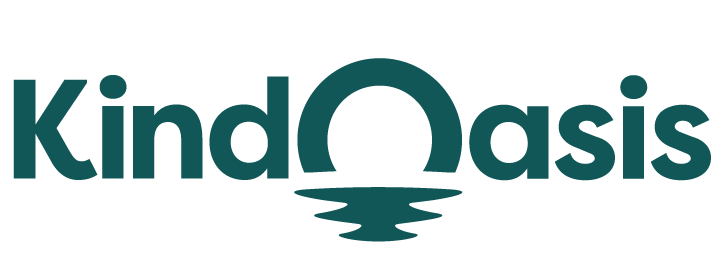Chatbot Best Practices for Enhancing Customer Experience with VanChat
Try AI ChatbotEnhance customer experience with VanChat! Discover top chatbot best practices in our latest blog article.

Chatbots have become an essential tool for enhancing customer experience in the digital landscape. By providing immediate assistance and personalized interactions, chatbots like VanChat are helping e-commerce businesses streamline their customer service processes. This AI-powered pre-sales chatbot for Shopify is designed to address a wide range of customer inquiries, from product comparisons to order tracking. With the ability to accurately answer 97% of questions without human intervention, VanChat empowers retailers to focus on what matters most: building lasting relationships with their customers.
To maximize the potential of chatbots, it’s vital to follow best practices that enhance customer experience. This article will explore effective strategies that businesses can implement to ensure their chatbots provide valuable interactions. With the right approach, chatbots can transform customer engagement and drive sales, creating a win-win situation for both retailers and consumers. For more insights into chatbot functionalities, refer to this resource.
Key Best Practices for Chatbot Implementation
Understanding Customer Needs
Before deploying a chatbot, it’s crucial to understand the needs of your customers. What common questions do they ask? What issues do they face during the shopping process? By identifying these pain points, you can tailor your chatbot to provide relevant and timely assistance.
VanChat excels in this area by continuously learning from your store’s text, images, and videos. This capability allows it to adapt its responses and provide precise information that aligns with customer inquiries. By leveraging these insights, retailers can enhance the user experience and drive customer satisfaction. For a deeper dive into understanding customer interactions, check out this article.
Personalizing the Experience
Personalization is a key factor in enhancing customer experience with chatbots. By utilizing data from user interactions, chatbots can offer tailored product recommendations and address specific customer needs. VanChat exemplifies this by analyzing customer behavior, purchase history, and chat logs to create detailed profiles. This allows it to ask follow-up questions, ensuring that the recommendations provided are relevant and timely.
Moreover, a personalized approach helps speed up purchase decisions and increases user satisfaction. Customers appreciate receiving suggestions that match their preferences, which can ultimately lead to higher conversion rates. Discover more about personalizing chatbot interactions here.
Designing an Effective Chatbot Experience
Keeping Conversations Natural
For a chatbot to be effective, it must engage customers in a natural and conversational manner. Avoid robotic responses and ensure that the language used feels human-like. This can be achieved by incorporating friendly and relatable phrases that reflect your brand’s tone.
VanChat’s use of the GPT-4 language model allows it to deliver a more interactive shopping experience. This advanced technology ensures that conversations flow smoothly, helping users find suitable products while feeling supported throughout their journey. To learn more about creating a natural conversation flow, check out this guide.
Implementing Proactive Sales Strategies
Proactive engagement is another effective way to enhance customer experience. Chatbots can be programmed to initiate conversations based on user behavior, offering assistance or product recommendations when users exhibit specific actions on the site.
VanChat stands out by sending timely discount reminders and suggesting best-selling products through pop-ups. By identifying latent needs during conversations, it encourages users to make purchases they might not have otherwise considered. This proactive approach can lead to increased sales and a more dynamic shopping experience. For additional tips on proactive strategies, see this article.
Continuous Improvement and Feedback
Gathering User Feedback
To ensure your chatbot remains effective, regularly gather user feedback. This can help identify areas for improvement and adjustments needed in responses or functionalities. Analyzing chat logs and soliciting direct feedback can provide valuable insights into customer satisfaction.
VanChat’s ability to learn from interactions means it continually evolves to meet customer needs. This adaptability is crucial for maintaining relevance in a fast-changing e-commerce landscape. For more on the importance of feedback in chatbot development, refer to this insightful resource.
Keeping Content Updated
Finally, ensure that the information provided by your chatbot is always up-to-date. Outdated or inaccurate information can lead to customer frustration and diminish trust in your brand. Regularly review and update the content that your chatbot delivers to ensure it remains accurate and helpful.
VanChat's dynamic learning capabilities allow it to stay current with your store’s offerings, providing customers with the most relevant information. This ensures that shoppers can rely on the chatbot for assistance in real-time, enhancing their overall experience.
Conclusion
By following these chatbot best practices, businesses can significantly enhance the customer experience and drive sales. Integrating an AI-powered solution like VanChat enables retailers to provide personalized, efficient, and proactive support, ultimately leading to higher customer satisfaction and loyalty. Embracing these strategies will ensure that your chatbot serves as a valuable asset in your e-commerce journey.
Relevant Links
- VanChat on Shopify
- What Is a Shopify Partner?
- The Best AI Chatbot for Shopify
- Ultimate Guide for Shopify Chatbot KPIs
- Tips for Creating a Successful Shopify Video
- Character Chatbot Uses and Benefits in Online Communication
- Best Practices for Chatbot Design
- Chatbots Best Practices to Enhance Customer Experience
- Chatbot Best Practices
- ProProfs Chat Blog on Chatbot Best Practices
- Talkative Blog on Chatbot Best Practices






